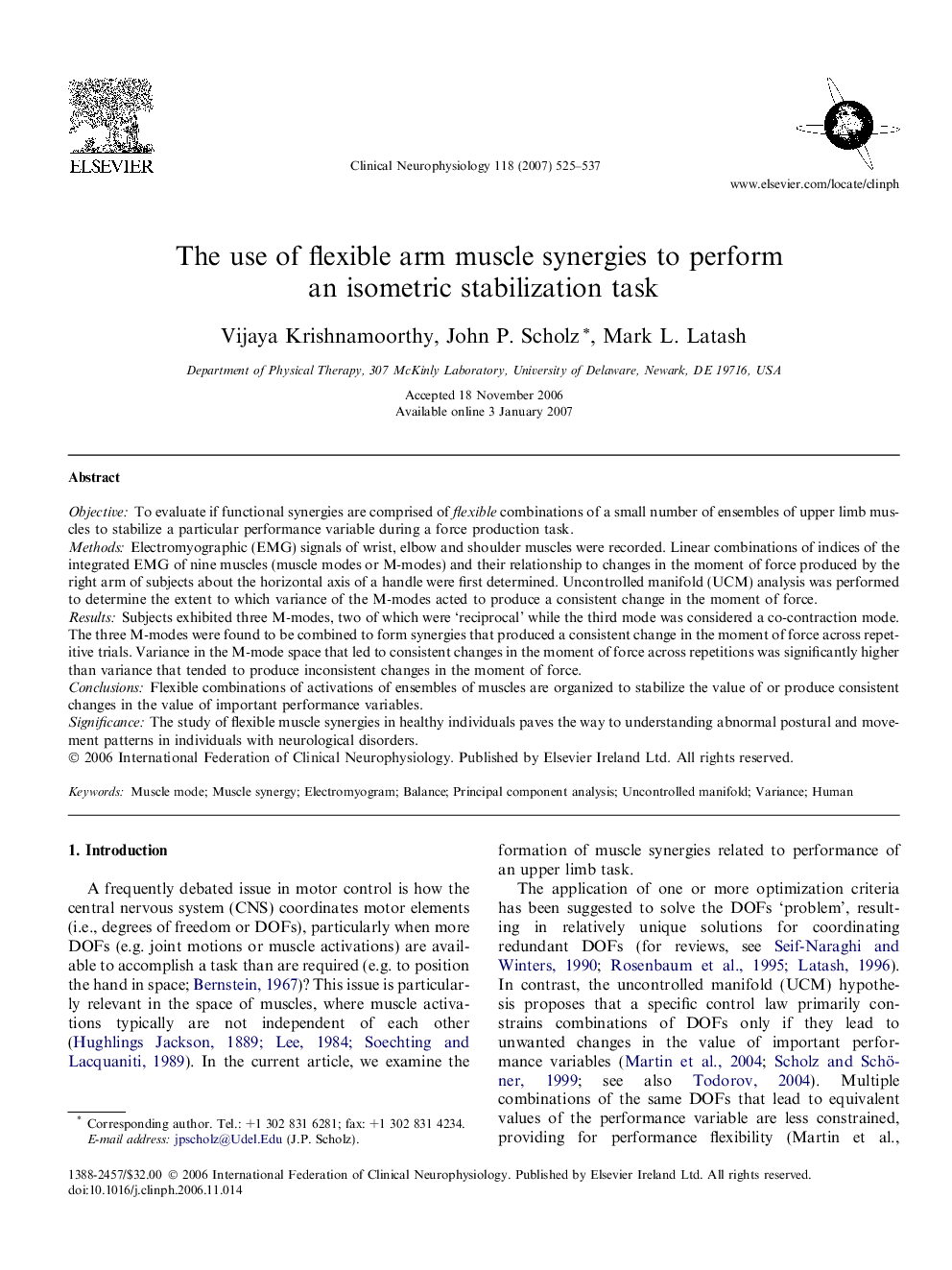| Article ID | Journal | Published Year | Pages | File Type |
|---|---|---|---|---|
| 3047841 | Clinical Neurophysiology | 2007 | 13 Pages |
ObjectiveTo evaluate if functional synergies are comprised of flexible combinations of a small number of ensembles of upper limb muscles to stabilize a particular performance variable during a force production task.MethodsElectromyographic (EMG) signals of wrist, elbow and shoulder muscles were recorded. Linear combinations of indices of the integrated EMG of nine muscles (muscle modes or M-modes) and their relationship to changes in the moment of force produced by the right arm of subjects about the horizontal axis of a handle were first determined. Uncontrolled manifold (UCM) analysis was performed to determine the extent to which variance of the M-modes acted to produce a consistent change in the moment of force.ResultsSubjects exhibited three M-modes, two of which were ‘reciprocal’ while the third mode was considered a co-contraction mode. The three M-modes were found to be combined to form synergies that produced a consistent change in the moment of force across repetitive trials. Variance in the M-mode space that led to consistent changes in the moment of force across repetitions was significantly higher than variance that tended to produce inconsistent changes in the moment of force.ConclusionsFlexible combinations of activations of ensembles of muscles are organized to stabilize the value of or produce consistent changes in the value of important performance variables.SignificanceThe study of flexible muscle synergies in healthy individuals paves the way to understanding abnormal postural and movement patterns in individuals with neurological disorders.
